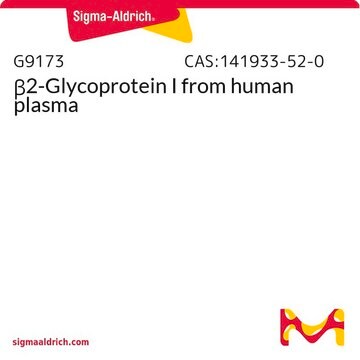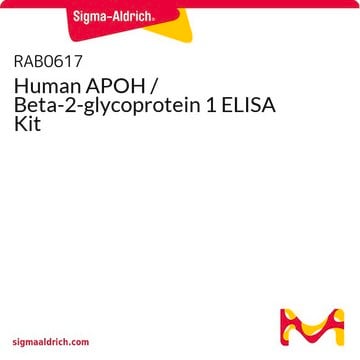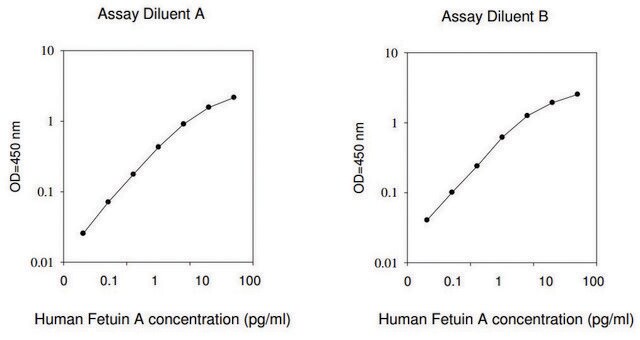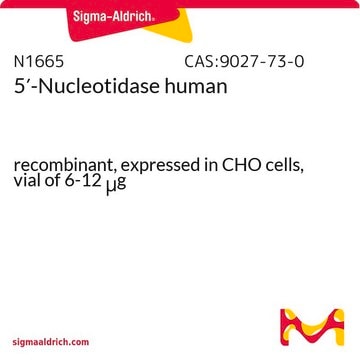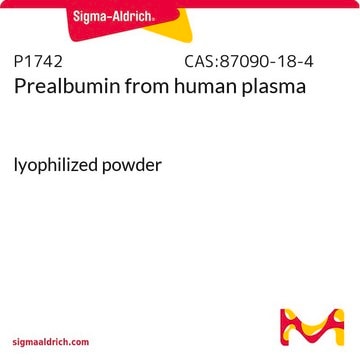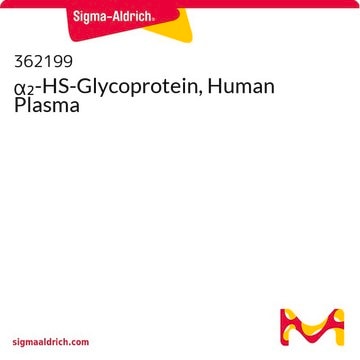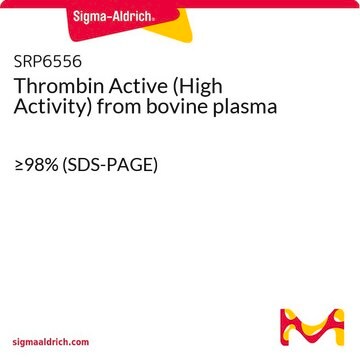362225
β₂-Glycoprotein 1, Human Plasma
Synonym(s):
Apolipoprotein H
Sign Into View Organizational & Contract Pricing
All Photos(1)
About This Item
UNSPSC Code:
12352202
NACRES:
NA.25
Recommended Products
Assay
≥95% (SDS-PAGE)
Quality Level
form
solid
manufacturer/tradename
Calbiochem®
storage condition
OK to freeze
concentration
≥2 PEU/mg solid (antigen content)
shipped in
ambient
storage temp.
2-8°C
General description
Native β2-glycoprotein 1 from human plasma. A carbohydrate-rich plasma protein that is a constituent of several lipoprotein particles. Possesses sialylated and galactosylated bi- and triantennary oligosaccharides.
Warning
Toxicity: Standard Handling (A)
Unit Definition
One PEU is defined as the amount of β₂-glycoprotein 1 present in 1 ml of normal plasma (~200 µg).
Physical form
Lyophilized from 200 mM glycine, 150 mM NaCl, pH 7.5.
Preparation Note
Prepared from plasma that has been shown by certified tests to be negative for HBsAg and for antibodies to HIV and HCV.
Reconstitution
Following reconstitution, store in the refrigerator (4°C). Stock solutions are stable for 1 month at 4°C or for up to 4 h at 20°C.
Reconstitute with 1 ml of distilled H₂O.
Other Notes
Wang, S.X., et al. 1999. Biochemistry 38, 9477.
Cassader, M., et al. 1994. Artherosclerosis 110, 45.
Walsh, M.T., et al. 1990. Biochem. 29, 6250.
Cassader, M., et al. 1994. Artherosclerosis 110, 45.
Walsh, M.T., et al. 1990. Biochem. 29, 6250.
Legal Information
CALBIOCHEM is a registered trademark of Merck KGaA, Darmstadt, Germany
Storage Class Code
11 - Combustible Solids
WGK
WGK 1
Flash Point(F)
Not applicable
Flash Point(C)
Not applicable
Certificates of Analysis (COA)
Search for Certificates of Analysis (COA) by entering the products Lot/Batch Number. Lot and Batch Numbers can be found on a product’s label following the words ‘Lot’ or ‘Batch’.
Already Own This Product?
Find documentation for the products that you have recently purchased in the Document Library.
Xue Jing et al.
Oncology reports, 40(2), 1035-1045 (2018-06-20)
Chronic hepatitis B virus (HBV) infection remains one of the leading causes of hepatocellular carcinoma (HCC) globally. However, the mechanism underlying the mediation by HBV surface proteins (HBsAgs) of the early steps in the virus life cycle and following HCC development
Our team of scientists has experience in all areas of research including Life Science, Material Science, Chemical Synthesis, Chromatography, Analytical and many others.
Contact Technical Service